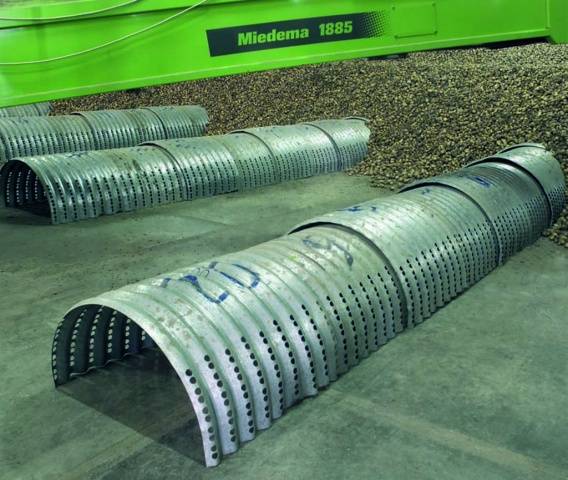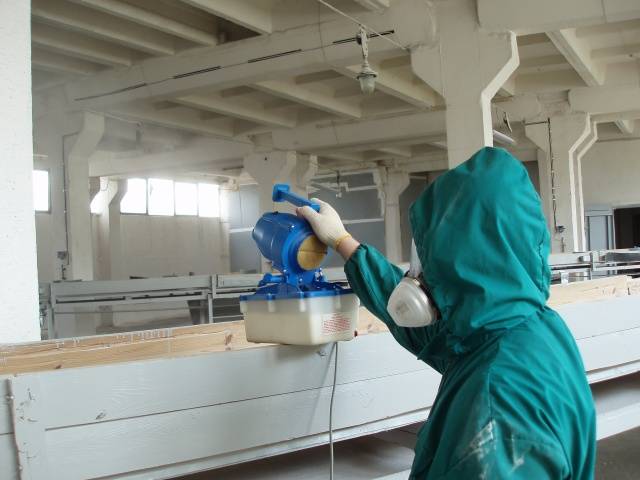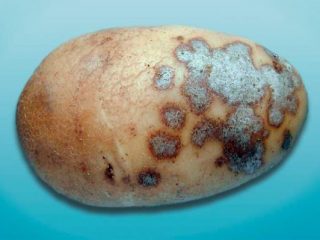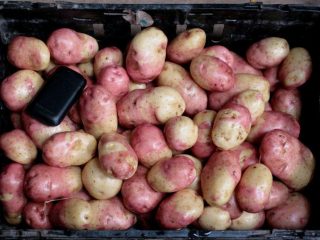Content
It’s hard to imagine the diet of the average Russian resident without potatoes; this root vegetable has firmly established itself on menus and on tables. Potatoes are tasty not only when they are young; the product is usually eaten all year round. This is where the main task of zealous owners arises: to preserve the harvest during the winter. In principle, potatoes are not considered a perishable product; the root crop can be safely stored for a month or six months.
In order to save most of the crop, you need to know the rules for storing potatoes: what the humidity in the storage should be, what temperature is optimal for this vegetable and, ultimately, where is the best place to store the potato crop in the winter.
Temperature and humidity conditions in the storage
Like all root vegetables, potatoes love consistency, namely the same level of humidity and the same temperature throughout storage. The optimal storage temperature for potatoes is 2-3 degrees Celsius, and humidity should be maintained at 70-80%.
What are the consequences of deviation from the temperature and humidity conditions during the storage stage:
- When the air temperature rises, the potatoes begin to “wake up”, that is, the tubers are preparing for planting in the spring soil. The eyes on the potatoes awaken and sprouts begin to grow. The consequence of this process is not only the need to remove sprouts from each potato by hand, but also the accumulation of a toxic substance - solanine - in the upper layer of the tuber peel.
- If, on the contrary, the thermometer begins to tend to zero, the starch contained in the potato will begin to turn into sugar. This leads to a deterioration in the taste characteristics of the potatoes, which become too sweet and spoil the taste of any dish. Subsequently, frozen potatoes simply rot and disappear.
- Increased humidity in storage is necessary for potatoes in order not to lose their weight, or simply to “shrink out” during storage. If the air in the potato storage is too dry, the root crops will become limp and dry, and the taste of such potatoes will sharply decrease.
- On the contrary, too high humidity leads to rotting of potato tubers and the rapid development of fungal infections.
- It is also unacceptable for the potato crop stored in winter to be exposed to sunlight. It is known that the sun leads to greening of root crops, which, in turn, is caused by the accumulation of toxic glucoside in potato tubers - such potatoes can no longer be eaten.
To preserve the nutritional value of the root vegetable and its taste, it is necessary to provide conditions under which the balance of these substances is not disturbed or is disturbed minimally.
Those who grow potatoes in their beds and try to preserve the harvest until the next season should know that potatoes can “breathe”: potato tubers absorb oxygen from the air, in return releasing steam and carbon dioxide (just like people). So, for effective storage, the owner must give the potatoes the opportunity to “breathe”. What this means can be found out below.
How to Maintain Potato Storage Temperature
In the climatic conditions of half of the country's regions, it is quite difficult to prevent storage facilities from freezing during the winter months. To prevent the tubers from freezing, you need to maintain a positive temperature when storing potatoes.
It is clear that on earth without heating devices it is impossible to keep the thermometer above zero. But this can be achieved by going deeper underground. That's why Vegetables, including potatoes, are usually stored in cellars or basements.
The temperature in a vegetable storage cellar type is optimal for potato tubers, but only if it is built correctly:
- the basement floor is 0.5-1 meter above the groundwater level (their level is measured during the autumn rainy season or spring flood);
- the walls of the storage facility are made of red brick, thick timber or concrete;
- the ceiling is insulated with foam plastic or other insulating material;
- a cellar was built above the cellar - a small “house” that serves as an air cushion and equalizes the temperature inside and outside the basement;
- there is supply and exhaust ventilation;
- During construction, the depth of soil freezing in a particular region was taken into account.
For storing potatoes Other types of storage, such as trenches, pits or piles, can also be used. In any case, you need to know that Potatoes are best stored independently, without proximity to other vegetables and products.
Storing potatoes in an apartment
It is very difficult to maintain the storage temperature for potatoes in winter in a city apartment or in a private house without a basement. For potato tubers in the apartment there is only one most suitable storage place - the balcony. But even here in winter, negative temperatures can be observed, and it is also very difficult to monitor the humidity level.
As long as the temperature outside the window does not drop below -10 degrees, you don’t have to worry about the harvest, but in more severe frosts you will have to take additional measures.
An excellent storage option for potatoes and other vegetables is double box. You can buy it or make it yourself from scrap materials:
- two square frames are made from timber: one box should fit freely into the second, and there should be a gap of several centimeters on the sides and bottom;
- the frames are sheathed tightly with thick plywood or boards;
- a layer of polystyrene foam, straw, sawdust or other insulation is placed on the bottom of the larger box;
- now you need to insert the smaller box into the larger one;
- insulation material is also placed in the walls between the two boxes;
- The storage lid must be airtight, so it is also lined with foam.
The only caveat of this design is that air does not circulate in a closed vegetable storage.Therefore, the potatoes will have to be sorted and ventilated several times during the winter season.
In such storage, a temperature that is comfortable for potatoes is set, and root crops are stored at their best for up to six months.
How to prepare potatoes for winter storage
Correct preparatory measures play a major role in effectively saving the potato harvest.
To preserve the harvest as much as possible in the basement or in another place, you need to fulfill the following requirements:
- Dig up potatoes on time. The optimal time to collect tubers is when the tops dry out. It is impossible to keep potatoes in the ground; they will begin to rot as they become saturated with excess moisture. Harvesting potatoes too early is also dangerous - the tubers still have too thin skins, they will not last until spring.
- Before harvesting, potatoes are not watered for at least two weeks.
- The dug up potatoes are scattered in a cool, shaded place (preferably under a canopy) and left to ventilate for several days.
- Now the potato crop needs to be sorted out, discarding all the cut, damaged and pest-eaten tubers.
Dried and sorted potatoes can be lowered into the basement.
Basement preparation
Not only potatoes must pass preparation for storage, the vegetable storage itself also needs to be prepared for harvesting. You need to start at the beginning of summer by taking all wooden shelves, boxes and drawers outside - all this should be thoroughly dried and ventilated.
A couple of weeks before planting potatoes, the cellar needs to be disinfected. To do this, it is most effective to use blue whitewash: lime slaked in water and mixed with copper sulfate. All walls and ceilings are whitewashed; the same product can be used to treat racks and shelves for potatoes.
It is better to remove the top layer of soil from the storage floor and replace it with clean and dry sand. Treatment of basements with sulfur bombs, which are sold in agricultural stores, is very effective. This product helps against mold, mildew, insects and rodents.
After any treatment, the storage facility is closed for a couple of days, and then thoroughly ventilated and dried. Now you can equip the storage for potatoes directly.
Potato storage boxes
Today there are a lot of plastic and wooden boxes and boxes on sale, specially designed for storing potatoes in the winter. But a simple vegetable storage facility is quite easy to make with your own hands.
The most important thing is that the potatoes do not touch the ground or walls of the cellar during storage. Therefore, the box is placed on a hill, and the root crops are isolated from the walls with wooden partitions. The distance to surfaces must be at least 15 cm.
The most suitable material for making boxes for storing potatoes is wood. Wood is capable of allowing air to pass through, absorb excess moisture, and evaporate it well. Boxes for storing potatoes are simply knocked down from narrow boards, always leaving gaps of one centimeter to ensure air flow to the tubers.
If simple boxes or plywood boxes are used to store potatoes, it is necessary to drill holes for the potatoes to “breathe” and place the boxes not on the floor, but on bricks or wooden blocks.
Storing potatoes in the cellar
All that remains is to put the potatoes in storage. It is more convenient to do this in bags. You need to pour the tubers into boxes and boxes carefully so as not to damage them (this will lead to rotting of the potatoes in the future).
The layer of potatoes should not be too large, optimally 30-40 cm. This way, the tubers will be properly ventilated, and it will be easier for the owner to identify rotten and spoiled potatoes.
It would be nice to additionally insulate the potatoes on top by covering the boxes with batting, straw, or covering the crop with sawdust. In this case, it is necessary to regularly check the potatoes, because rodents or insects can easily infest the insulation.
Since tubers can “breathe,” condensation may form on the basement ceiling (if the ventilation system is done correctly, this should not happen). Drops of water accumulate on the ceiling and then fall back onto the potatoes, causing the tubers to rot and freeze. An inclined canopy over the boxes, which can be constructed from thick plastic film, will help protect the potatoes.
Excessive humidity in the storage is also not needed; a layer of sand or lime powder scattered on the floor will help get rid of it.
These are all the tricks that a potato plantation owner should know.There is nothing complicated in storing potatoes; a good cellar and proper preparation for winter storage will help you avoid most problems. And, of course, the more stable the temperature and humidity in the cellar, the more effective the result will be.
You can learn how potatoes are stored on an industrial scale from the video:























